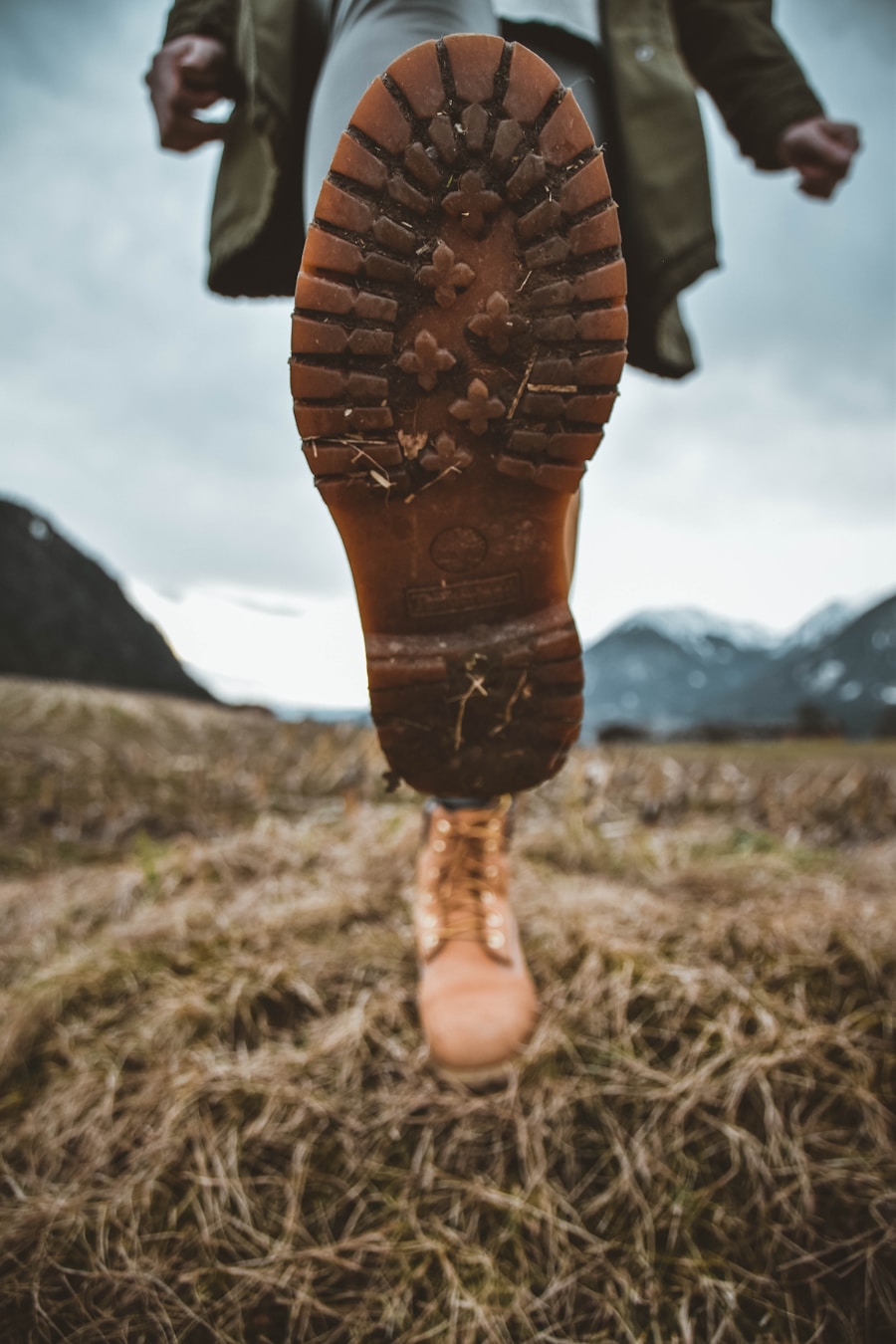Before embarking on the journey of selecting the perfect hiking boot, it is essential to first understand your specific needs. Hiking is not a one-size-fits-all activity; the terrain, duration, and intensity of your hikes will significantly influence the type of footwear that will best serve you. For instance, if you are planning to tackle rugged mountain trails with steep inclines and rocky surfaces, you will require a boot that offers substantial ankle support and a robust sole for stability.
Conversely, if your hiking plans involve leisurely strolls on well-maintained paths, a lighter, more flexible shoe may suffice. Additionally, consider the climate and weather conditions you are likely to encounter. If you often hike in wet or muddy environments, waterproof boots with breathable membranes will be crucial to keep your feet dry and comfortable.
On the other hand, if you hike in hot and dry conditions, a boot with good ventilation will help prevent overheating and excessive sweating. Understanding these factors will guide you in making an informed decision that aligns with your hiking style and environment.
Key Takeaways
- Understand the type of hiking you will be doing and your specific needs before choosing a hiking boot.
- Choose the right type of hiking boot based on the terrain, weather conditions, and duration of your hikes.
- Finding the perfect fit is crucial for comfort and preventing blisters and injuries.
- Consider the material and construction of the hiking boot to ensure durability and support.
- Evaluate traction and support to ensure stability and safety on different terrains.
Choosing the Right Type of Hiking Boot:
Hiking boots come in various types, each designed for specific activities and terrains. The primary categories include day hiking boots, backpacking boots, and mountaineering boots. Day hiking boots are typically lightweight and designed for short to moderate hikes on well-defined trails.
They offer a balance of comfort and support without the bulk of heavier models. These boots are ideal for casual hikers who prioritize ease of movement over extensive durability. Backpacking boots, on the other hand, are built for longer treks where you may be carrying a heavier load.
They provide enhanced support and stability, often featuring stiffer soles to handle uneven terrain. These boots are generally taller, offering additional ankle support to prevent injuries during multi-day hikes. For those who venture into extreme conditions or technical terrains, mountaineering boots are essential.
These are designed to withstand harsh weather and provide the necessary grip and support for climbing steep inclines or traversing icy surfaces. Understanding these distinctions will help you select a boot that aligns with your hiking ambitions.
Finding the Perfect Fit:

The fit of your hiking boot is arguably one of the most critical factors in ensuring a comfortable hiking experience. A poorly fitting boot can lead to blisters, discomfort, and even injuries during your hike. When trying on boots, it is advisable to wear the same type of socks you plan to use while hiking.
This will give you a more accurate sense of how the boot will feel during your adventures. Pay attention to the width and length; your toes should have enough room to wiggle without feeling cramped, while the heel should fit snugly to prevent slipping. It is also important to consider the shape of your foot when selecting a boot.
Some brands cater to wider feet, while others may be more suitable for narrower shapes. Additionally, many manufacturers offer different models that accommodate various arch types—high, medium, or low. Trying on multiple brands and styles can help you identify which ones align best with your foot shape and size.
Remember that hiking boots often require a break-in period; therefore, it’s wise to wear them around the house or on short walks before embarking on longer hikes.
Considering Material and Construction:
| Material | Construction |
|---|---|
| Steel | Reinforced concrete |
| Wood | Brick and mortar |
| Aluminum | Steel frame |
The materials used in hiking boots play a significant role in their performance and longevity. Most hiking boots are constructed from either leather or synthetic materials, each offering distinct advantages. Leather boots are known for their durability and resistance to abrasions, making them an excellent choice for rugged terrains.
They also provide good water resistance when treated properly. However, leather can be heavier and may require more time to break in compared to synthetic options. Synthetic materials, such as nylon or polyester, are lighter and often more breathable than leather.
They dry quickly and are generally more affordable, making them appealing for casual hikers or those who prefer shorter excursions. However, they may not offer the same level of durability as leather in extremely rough conditions. Additionally, consider the construction method of the boot—whether it is stitched or glued—since this can affect its waterproof capabilities and overall lifespan.
A well-constructed boot will withstand the rigors of hiking while providing comfort throughout your journey.
Evaluating Traction and Support:
Traction is a critical aspect of any hiking boot, as it directly impacts your stability on various surfaces. The outsole of a boot is typically made from rubber and features lugs—small protrusions that provide grip on different terrains. When evaluating traction, look for deeper lugs that can dig into soft ground or loose gravel while also providing stability on rocky surfaces.
Some outsoles are designed with specific tread patterns that enhance grip during descents or ascents. Support is equally important, particularly for those who hike on uneven or challenging terrains. A boot with good arch support can help distribute weight evenly across your foot, reducing fatigue during long hikes.
Additionally, consider the height of the boot; taller models offer increased ankle support, which can be beneficial when navigating rocky paths or carrying heavy packs. A combination of excellent traction and robust support will enhance your overall hiking experience by allowing you to focus on the trail ahead rather than worrying about slips or discomfort.
Testing for Comfort and Durability:

Once you have narrowed down your options based on fit, material, and support features, it’s time to test the boots for comfort and durability. Comfort can be subjective; what feels good for one person may not work for another. Therefore, it’s essential to walk around in the boots for an extended period before making a purchase decision.
Pay attention to any pressure points or areas that feel tight; these could lead to blisters during actual hikes. Durability testing can be more challenging but is equally important. Look for reviews from other hikers who have used the boots in similar conditions to those you plan to encounter.
Consider how well the boots hold up against wear and tear over time—do they maintain their shape? Are there any signs of material degradation? Additionally, if possible, take them on shorter hikes or walks in varied conditions to assess their performance under real-world scenarios.
This hands-on approach will provide valuable insights into how well the boots will serve you in the long run.
Comparing Brands and Prices:
The market is flooded with numerous brands offering hiking boots at various price points, making it essential to conduct thorough research before making a decision. Popular brands like Merrell, Salomon, and Vasque have established reputations for quality and performance in outdoor footwear. Each brand has its unique features; for instance, Salomon is known for its innovative designs that prioritize comfort and agility, while Merrell often focuses on versatility across different terrains.
When comparing prices, it’s crucial to balance cost with quality. While it may be tempting to opt for cheaper options, investing in a higher-quality boot can save you money in the long run by reducing the need for replacements due to wear or discomfort. Look for sales or discounts from reputable retailers but ensure that you are not compromising on essential features such as fit or support just to save a few dollars.
Reading customer reviews can also provide insights into whether a particular brand’s pricing aligns with its performance.
Maintenance and Care Tips:
Proper maintenance of your hiking boots is vital for extending their lifespan and ensuring optimal performance during your adventures. After each hike, take the time to clean your boots thoroughly; remove dirt and debris from the soles using a soft brush or cloth. If your boots are made from leather, consider applying a specialized leather conditioner periodically to keep the material supple and prevent cracking.
Waterproofing is another critical aspect of maintenance; if your boots feature a waterproof membrane, ensure that it remains intact by avoiding excessive exposure to water when possible. For leather boots, applying a waterproofing treatment can enhance their resistance against moisture. Additionally, store your boots in a cool, dry place away from direct sunlight when not in use; this helps prevent deterioration of materials over time.
By following these care tips, you can ensure that your hiking boots remain reliable companions on all your outdoor excursions.
If you are planning a hiking trip, it is essential to have the right gear, including a good pair of hiking boots. To ensure you make the best purchase, check out this article on how to buy hiking boots. This guide provides valuable tips on what to look for when selecting the perfect pair of boots for your outdoor adventures. Additionally, having a lightweight laptop for travel, as mentioned in this article on the best lightweight laptop for travel, can also enhance your hiking experience by allowing you to easily research trails and plan your routes. Don’t forget to pack a travel fishing pole, as highlighted in this article on the best travel fishing pole, to enjoy some fishing along the way.
FAQs
What should I consider when buying hiking boots?
When buying hiking boots, consider the type of terrain you will be hiking on, the level of ankle support you need, the material of the boots, the fit and comfort, and the waterproofing and breathability of the boots.
What type of hiking boots should I buy?
The type of hiking boots you should buy depends on the type of hiking you will be doing. For light hiking on well-maintained trails, low-cut hiking shoes may be sufficient. For more rugged terrain and longer hikes, mid-cut or high-cut hiking boots with ankle support are recommended.
How should hiking boots fit?
Hiking boots should fit snugly but not too tight. There should be enough room in the toe box for your toes to wiggle, and your heel should not lift when you walk. It’s important to try on hiking boots with the socks you will be wearing while hiking to ensure the right fit.
What material should I look for in hiking boots?
Hiking boots are typically made of leather, synthetic materials, or a combination of both. Full-grain leather offers durability and support, while synthetic materials are often lighter and more breathable. Consider the pros and cons of each material based on your hiking needs.
How do I ensure my hiking boots are waterproof?
Look for hiking boots with waterproof membranes such as Gore-Tex or eVent, which provide a barrier against water while allowing moisture to escape. Additionally, seam-sealed construction and water-resistant treatments can help keep your feet dry on the trail.
